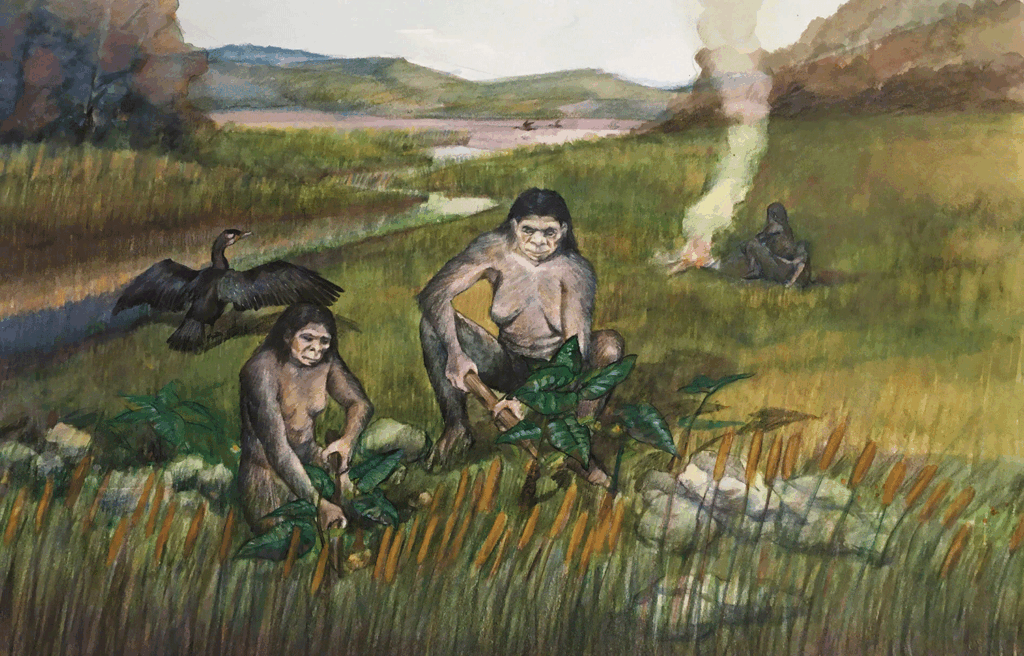
In the hills of southwestern China, near the ancient shoreline of Fuxian Lake, a groundbreaking archaeological discovery has reshaped scientific understanding of early tool use. A collection of 35 wooden implements—some resembling digging sticks and others shaped like small, pointed hand tools—was unearthed at a site called Gantangqing. This remarkable find challenges previous beliefs about early human capabilities and provides strong evidence that woodworking was practiced by our distant ancestors much earlier than previously thought.
The wooden artifacts, estimated to be between 361,000 and 250,000 years old, date back to the Middle Pleistocene, a period long before Homo sapiens emerged. Despite their age, the tools were remarkably well-preserved, thanks to the clay-heavy, low-oxygen soil near the lake, which protected the wood from decay. Such preservation is rare, as wood typically decays quickly when exposed to air, moisture, and microorganisms.
Uncovering the Past: A Rare Glimpse into Early Human Life
The discovery at Gantangqing offers a rare glimpse into the daily lives of early humans in East Asia. Unlike stone or bone, wood is fragile and decays quickly, making ancient wooden tools nearly impossible to find, especially those older than 50,000 years. Most known examples come from Africa and parts of western Eurasia. However, the unique conditions at Gantangqing allowed these wooden tools to survive, buried in deep, oxygen-poor sediment near an old lakeshore.
Archaeologists, paleontologists, and geologists collaborated at this site between 2014 and 2019, uncovering a collection that reveals much more than just tool use. It opens a window into how these early humans lived, worked, and adapted to their environment. Dating the wood directly is nearly impossible without destroying it, so scientists dated the sediment layers where the tools were found using infrared stimulated luminescence. This method examined over 10,000 grains of mineral to determine when the surrounding soil was last exposed to sunlight, revealing a range between 350,000 and 200,000 years ago.
“The results showed a range between 350,000 and 200,000 years ago. To confirm this, researchers also dated a mammal tooth found in the same layer, which came back at roughly 288,000 years old.”
Craftsmanship and Complexity: A New Understanding of Early Tools
The wooden tools from Gantangqing include large, two-handed digging sticks and smaller, hand-held implements, many made from pine and a few from harder woods. Several feature intentionally polished surfaces, sharp chisel-like blades, hook-shaped curves, or rounded tips. Out of the 35 artifacts, 32 show clear signs of shaping—such as cutting, scraping, and polishing. Soil residues clinging to the tips suggest they were used for digging into the ground.
Microscopic traces of wear and shaping were found on 19 tools, while 17 show smooth, polished surfaces from repeated use, indicating skilled craftsmanship and planned use. These tools were not just broken sticks—they were carefully made, likely for specific tasks like digging up roots and tubers. Some of the digging tools are heavier than those seen at other sites from the same era, possibly used to extract underground food from dense soil.
Compared to finds from sites like Clacton in the UK or Florisbad in South Africa, the Gantangqing collection is more complete and diverse, including a broader variety of tools with more complex modifications.
Life in a Subtropical Lakeside World
The tools suggest a lifestyle heavily reliant on plant gathering. The ancient people who used these tools lived in a warm, wet, subtropical climate filled with a rich variety of plants and animals. Pollen analysis from the site identified 40 different plant families, and fossilized remains confirmed that Gantangqing was once a lush lakeside forest. Evidence from sediment also included aquatic plants likely growing in the shallow waters along the shore.
Animals like rhinoceroses, turtles, birds, and diving ducks roamed the area, suggesting a mix of grasslands, wetlands, and forests, with a freshwater lake at the center. Fruit-bearing trees like grapes and raspberries grew nearby, along with hazelnuts and pine nuts. Edible leaves, roots, tubers, and ferns were also present, making digging tools essential for accessing these plant foods.
“The evidence points to a plant-based diet. These early humans likely traveled to the lake with tools in hand, ready to dig for nutritious roots and other underground food.”
A New View of Early Human Intelligence
The Gantangqing site offers the earliest known proof of specialized digging sticks and underground plant gathering in East Asia, showing that early humans in this part of the world were capable woodworkers using complex tools to survive in a rich, wet environment. This contrasts with sites in colder regions like northern Europe, where survival depended more on hunting large animals and tools were often made of stone for cutting meat or scraping hides.
At Gantangqing, the wooden tools reveal a broader tool-making culture that extends beyond the stone record. Many archaeologists have long focused on stone tools simply because those survive best, but this find proves early humans were also skilled with organic materials like wood. The advanced shaping of these tools challenges the idea that humans in East Asia during the Early Paleolithic were behind in tool-making skills.
The wooden artifacts from Gantangqing are not only older than most other wood tools found globally but also show a level of specialization and craftsmanship that rivals or exceeds other known sites.
Why This Discovery Matters
This breakthrough changes how scientists view early human technology, confirming that woodworking was a valuable part of survival strategies even hundreds of thousands of years ago. It shows that early humans didn’t just react to their environment—they shaped it with planning, creativity, and skill. Researchers believe many more wooden tools were likely used in the past but have not survived the long passage of time.
Finds like the one at Gantangqing offer rare and valuable insight into how early hominins lived and thrived, highlighting how much we might still be missing. Future excavations in similar preservation environments could help complete the picture of human evolution—not just through stone, but also through the lost world of wood.
Research findings are available online in the journal Science.







